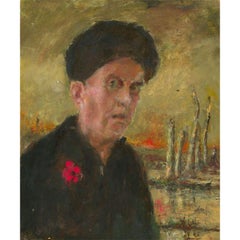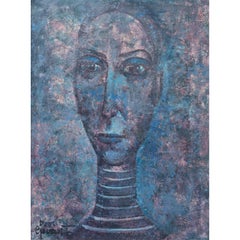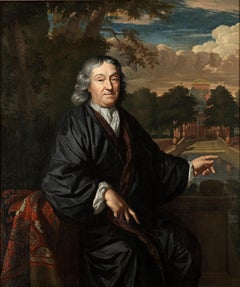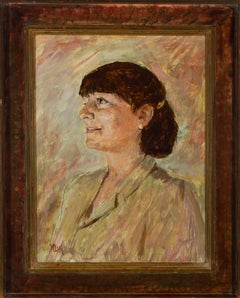Ronald Olley Portrait Paintings
Ronald Olley was born in 1923 and studied at both the Harrow Art School and the Central School, London. His father served as a soldier throughout the First World War, and Olley joined the army in 1942. He witnessed the bombing of Bath, England, before being stationed at El Alamein in Egypt, and Italy. Along with landscape and figure painting, Olley has had numerous commissions for portraits, mainly of women and children. As one of the last artists to paint World War II from personal experience, a significant part of his portfolio depicts battlegrounds and war-torn landscapes. These have been painted using significant research and photographs, alongside Olley's knowledge of the front line. His work has been shown at the Royal Academy and the Royal Society of British Artists, as well as in exhibitions at the Medici Gallery and Duncan Campbell. His works have been bought by collectors in Europe, the USA, Australia, Africa and Japan.
21st Century and Contemporary Ronald Olley Portrait Paintings
Oil
20th Century Ronald Olley Portrait Paintings
Oil
1680s Old Masters Ronald Olley Portrait Paintings
Canvas, Oil
17th Century Old Masters Ronald Olley Portrait Paintings
Canvas, Oil
Early 20th Century Impressionist Ronald Olley Portrait Paintings
Canvas, Oil
Venice Landscape Italian Oil on Canvas Painting in Gilt Wood Frame, Belle Epoque, Early 20th Century
Late 18th Century Ronald Olley Portrait Paintings
Canvas, Oil
18th Century and Earlier Ronald Olley Portrait Paintings
Canvas, Oil
18th Century and Earlier Baroque Ronald Olley Portrait Paintings
Canvas, Oil
18th Century Old Masters Ronald Olley Portrait Paintings
Canvas, Oil
18th Century and Earlier Ronald Olley Portrait Paintings
Canvas, Oil
16th Century Old Masters Ronald Olley Portrait Paintings
Oil, Wood Panel
Early 18th Century Italian School Ronald Olley Portrait Paintings
Oil, Wood Panel
19th Century Romantic Ronald Olley Portrait Paintings
Canvas, Oil
21st Century and Contemporary Ronald Olley Portrait Paintings
Oil
An extremely fine and engaging work by the British listed artist Ronald Olley (b.923), depicting a well-dressed elderly lady in a yellow hat, sipping coffee in an interior while p...
20th Century Impressionist Ronald Olley Portrait Paintings
Oil




